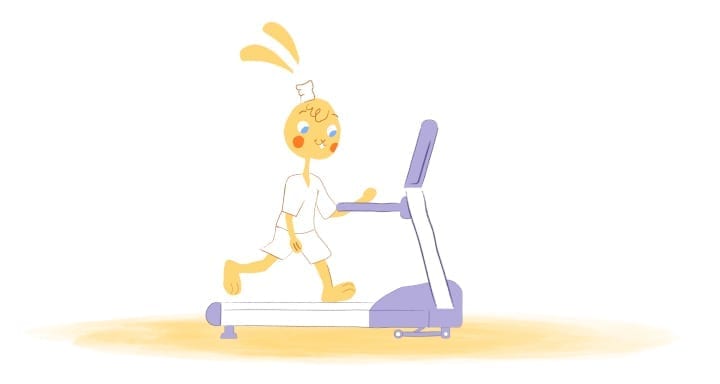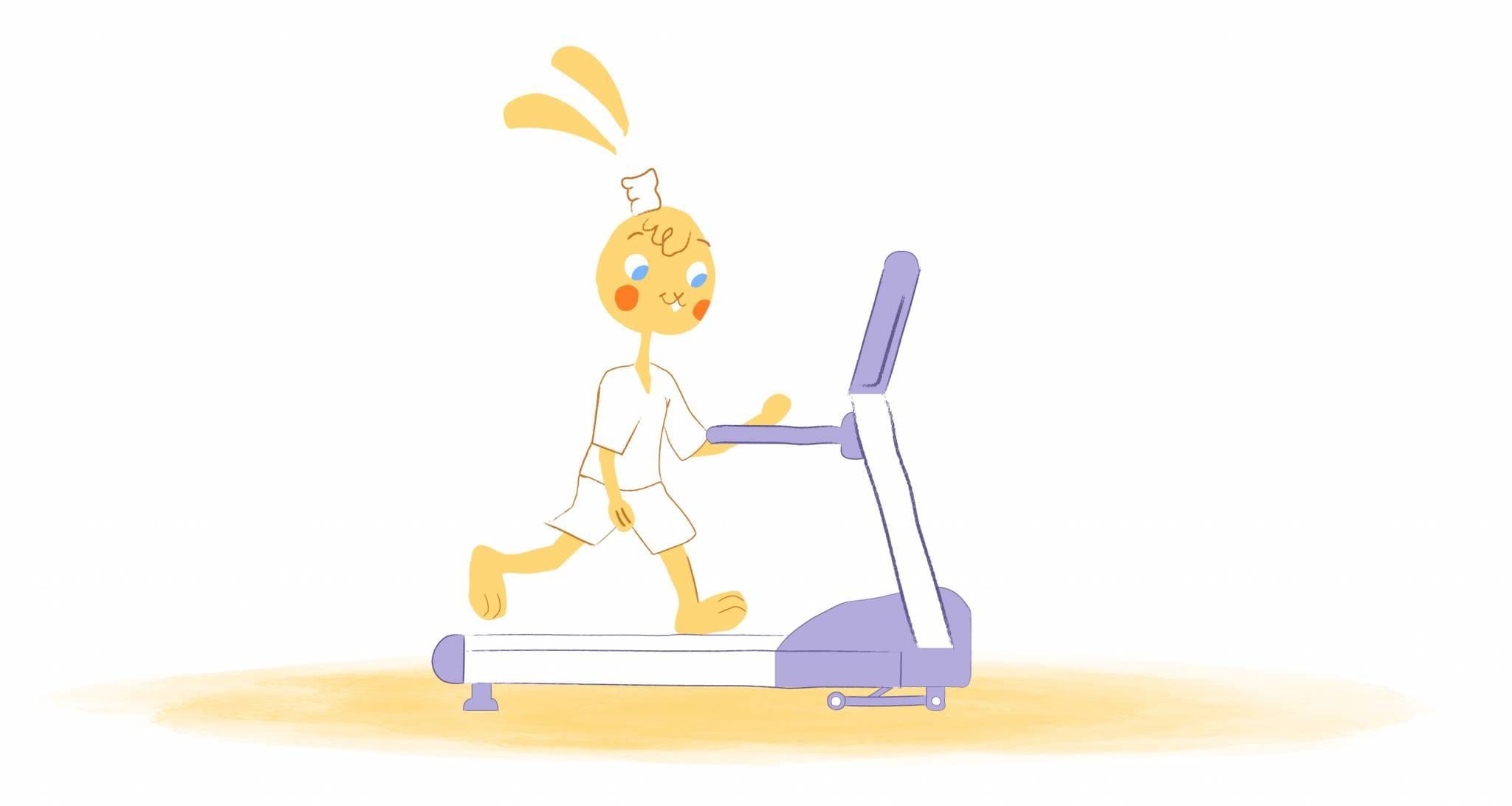

Throughout the years, it’s been found that working from home can be a positive experience. For a lot of us, I think we don’t miss those hectic mornings. You know, rushing out the door to beat traffic and then rush home to make it back for dinner.
From my experience, not having to put up with the rat race means I have more time. As opposed to an hour commute each day, I can use that time however I please. Usually, I spend this time exercising or getting a head start on my day to end earlier.
But don’t just take my word for it. Research shows that working from home increases performance and productivity. Moreover, it also encourages a healthier and happier life both in-and-out of work.
Additionally, there’s less stress related to commuting, which can cause higher cholesterol and risk of depression. And, because you’re working remotely, you can customize your own workspace. Or, even better, you aren’t limited by geographic location.
It’s also better for the environment. And, for both businesses and individuals, this arrangement can lead to cost savings. Mainly, this comes in the form of overhead, real estate, transit subsidies, and replacing employees who leave.
At the same time, there are some major drawbacks. There can be communication breakdowns, such as misunderstandings and Zoom fatigue. You must also overcome distractions at home, low morale, and isolation.
Combine that with the mental health impact of COVID, such as depression and anxiety, which could be a recipe for disaster. However, one simple and quick fix to counter the disadvantages of WFH and COVID is through physical activity.
Sound impossible? Well, here are 10 ways to work out and stay active while working from home.
1. Work Out First Thing — and Then Again Later On
“The easiest adjustment you can make to your healthy routine when you are working from home is to wake up by doing some form of cardio first thing,” trainer and fitness specialist Reggie Chambers told AskMen “Do it before you eat breakfast to get that metabolism fired up. And later in the day, follow that up with weight/resistance training.”
Chamber suggests exercises that can be done from anywhere, like burpees, squats, or push-ups. While most of these don’t require weights, you can “use heavy objects in each hand like water bottles,” he adds.
“Splitting a workout into two during the day will really torch the calories,” says Chambers. “Other exercises you can do between writing emails and conference calls are jumping rope, running in place, doing some jumping jacks, or running up and down the stairs.”
Another idea would be to “pick up the pace and make it more metabolism-friendly” when running errands. There are so many little ways you can increase your body’s movement!”
2. Set Alarms To Stretch and Move
Personally, I’ve had success by building exercise into my routine. For example, I usually work out as soon as I get up. But, I also schedule breaks in my calendar throughout the day to offset the effects of sitting, reducing stress and maintaining performance.
Best of all? You can literally do a variety of yoga stretches right from your desk. These include neck rolls, cat-crow stretch, seated forward bend, wrist stretch, and seated spinal twist. Beyond stretching, you can also do office exercises like desk push-ups, lunges, calf raises, and triceps dips.
3. Create a “Commute”
Remember, now that you don’t have to worry about your commute, you can use that time to squeeze in some sort of physical activity. For instance, right before diving into work, go for a bike ride, or take your dog for a long walk. You should also do this at the end of your workday.
Besides increasing your heart rate, kickstarting your metabolism, and relieving stress, this creates a transition period. That means you’re also using physical activity to mentally switch between work and personal time. So, in the morning, this can get you into “the zone,” while at night, this lets you detach from work.
4. Put Workout Equipment in the Way
In addition to working out at your desk, you might want to keep other equipment visible. In fact, you might even want to place things like weights, a jump, or even your sneakers in the way. Just be careful not to trip over them!
I know that clutter can be distracting. This is a simple way to give yourself a visual reminder to get moving when taking a longer break. For instance, if you use the Pomodoro Technique, then after four pomodoros, you could squeeze in a 20 or 30-minute workout.
5. Use Technology to Your Advantage
Let’s be real here. It takes a lot of self-discipline to get off your keister. That’s why having a gym buddy can help keep you accountable and motivated — unless you have a housemate to keep you going.
However, that’s not an excuse when technology can resolve this problem. Examples include:
- Downloading activity-tracking apps that keep a log of your daily activities.
- Using workout guide apps like PEARL Fitness Coach.
- Listening to much that makes you want to dance or match your running temp.
- Following fitness influencers on Instagram to motivate you.
- Upgrading your home gym with “smart” fitness machines like Temp Studio or Peloton.
6. Set Up Your Desk for Success
Did you know that how you set up your desk can also inspire you to be more active? The most obvious would be investing in a standing, bike, or treadmill desk. These prevent you from staying sedentary for too long, which means you’ll be more productive and have less back pain.
If you want to stick with your current desk or have limited space, you could look into a bike pedal exerciser that you can slide underneath. Or, you could replace your desk chair with a balance ball chair or ergonomic stool.
Also, it’s tough to get moving when you’re achy. As such, adjust your workplace so that it’s ergonomic. Some recommendations from the Mayo Clinic would be:
- Choosing a chair that supports your spinal curves. Also, adjust the height “so that your feet rest flat on the floor or a footrest and your thighs are parallel to the floor.”
- Keeping “key objects — such as your telephone, stapler or printed materials — close to your body to minimize reaching.”
- Placing “your mouse within easy reach and on the same surface as your keyboard.” When “typing or using your mouse, keep your wrists straight, your upper arms close to your body, and your hands at or slightly below the level of your elbows.” And, “Use keyboard shortcuts to reduce extended mouse use.”
- Putting “the monitor directly in front of you, about an arm’s length away. The top of the screen should be at or slightly below eye level. Also, keep the monitor “directly behind your keyboard.
- Using a footrest if your chair is too high.
- When on the phone, use the speaker or a headset instead of “cradling the phone between your head and neck.”
7. Get Active During Calls and Meetings
It will be distracting if you’re doing jumping jacks during a video call. But, you could stand-up during your next Zoom meeting. And, when you’re waiting for the event to start, do some calisthenics or climb starts.
For a good, old fashioned phone call, pace around your house. I’ve done this for so long that it’s just become second nature. In case you’re wondering, researchers at Stanford University have discovered that walking boosts creative inspiration — which could come in handy during brainstorming sessions.
8. Spread Movement Throughout the Day
If you’re still struggling to stay active, then find some sneaky ways to get your body moving. For example, while brushing your teeth, you can do heal-raises or push-ups on the counter while the coffee is brewing. You could also incorporate squats while doing laundry or lunges when vacuuming.
9. Get Outside and Play
If you have kids or a dog, this shouldn’t be a problem. It’s just that you need to set boundaries so that you can go into your backyard or local park to play soccer or fetch. Even if you aren’t a parent, you and your significant other could play outdoor games like cornhole, horseshoes, or bocce.
What if no one else is around? You could shoot ups or just go for a walk. According to Charles Hillman, the Center for Cognitive and Brain Health co-director at Northeastern University, a 20-minute brisk walk can improve work performance and brain function.
As an added perk, spending time outside can do wonders for your mental health. And, “play has been shown to release endorphins, improve brain functionality, and stimulate creativity,” notes Michael Forman for Wanderlust.
10. Implement Operational Incentives
Finally, if you’re in a leadership position, you could host a fitness challenge among your remote team. You could also allow them to earn “walking bucks” or create a dedicated Slack channel for everyone to share their fitness goals and wins. Another option will be to reimburse them if they’ve purchased a working streaming service subscription.











Deanna Ritchie
Editor-in-Chief at Calendar. Former Editor-in-Chief and writer at Startup Grind. Freelance editor at Entrepreneur.com. Deanna loves to help build startups, and guide them to discover the business value of their online content and social media marketing.